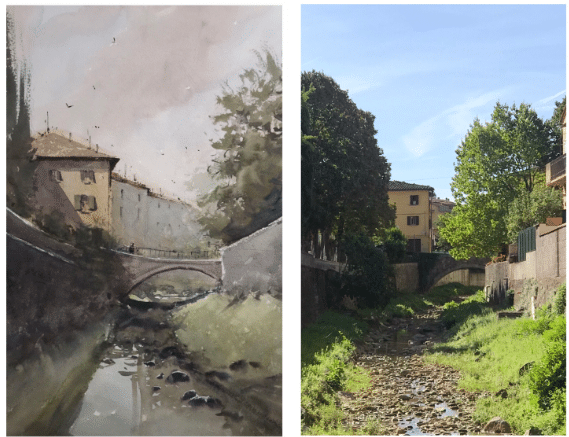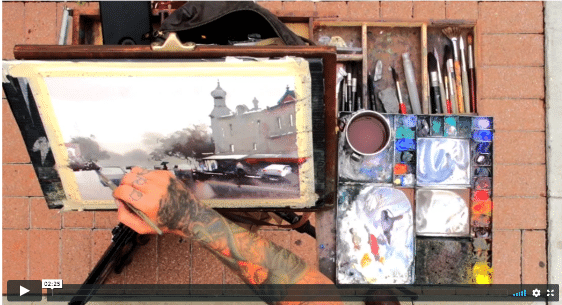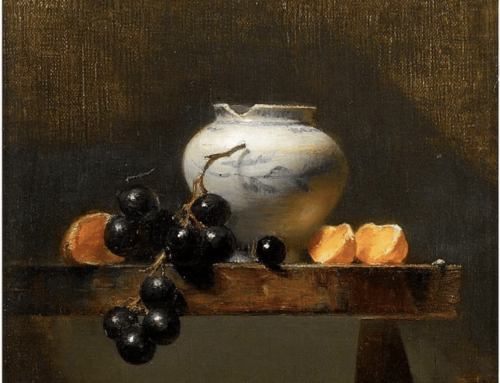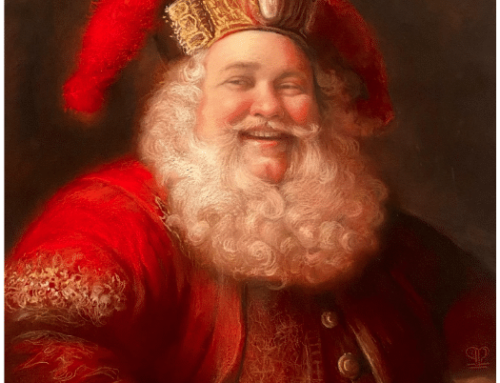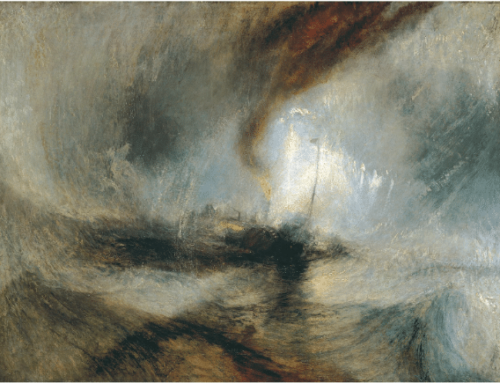Sometimes as artists we are blessed with a perfect composition before us, but most of the time editing is required! Editing allows us to better translate a scene and present the story we want to tell with our art. Too often we can get caught up in just trying to duplicate, not create.

The scene
On a recent painting trip to Italy, I came upon this subject of a canal in Greve in Chianti. I had spotted it from a narrow bridge, just behind and above from where I eventually set up my easel. Since the bridge and pedestrian walkway were too narrow and not a safe place to set up, I decided to climb down the rocks onto the bank of the canal. Not only did this keep me away from danger but also away from the crowds of tourists.
It is a quaint scene with typical Italian buildings but not from a typical viewpoint. I was attracted by the strong lead-in of the retaining wall on the left and the bridge connection in the middle but the composition needed editing to create a stronger painting.
Dan shares more tips in his DVD CITYSCAPES IN WATERCOLOR WITH DAN MARSHALL.
In this case, the main building and bridge (the subject) is a little far away, The reflection of the creek doesn’t go up far enough, the light on the buildings is a little flat and the mass of trees on the left are too prominent. You can work out compositional changes to a scene with thumbnail sketches and a small study but for this, I did what I call “mental photoshop”. I gaze out and study the scene then start to visualize my painting, compose and rearrange as I see fit. Essentially I create in my mind a pre-visualization of the finished piece.
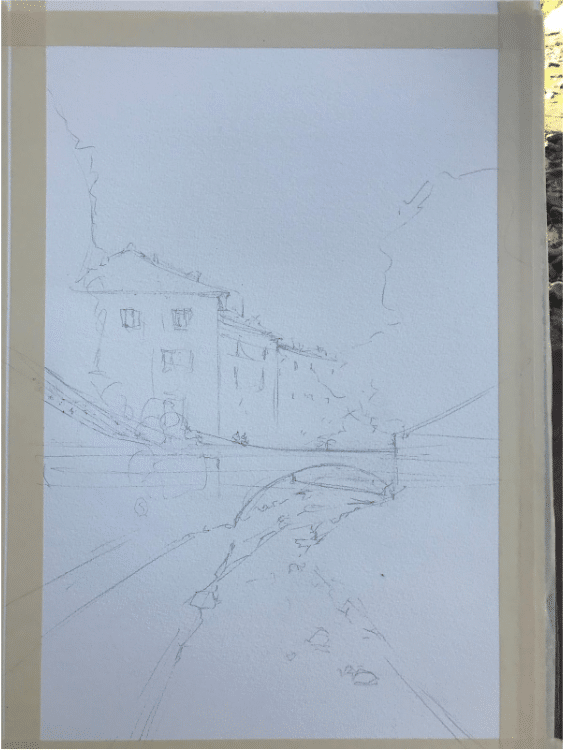
The pencil construction
If you compare the two scene photos to my pencil layout sketch you can see how I merged the foreground creek up to better connect to the middle ground. I then use directionals of the creek and wall to lead your eye in to the subject area.
In the finished watercolor painting (below), you can also see a strong directional shadow on the building aiming right towards the subject and a subtle design in the sky that leads towards the buildings. I also changed some of the trees into pencil lines to give more of a Tuscan feel.
This painting is full of zigzag connections and echoing repetition of shapes. Look for a “V” in the sky shape and an inverted “V” in the foreground, can you see them? And see how all the elements fit together like a puzzle to create a unified design and cohesive painting?
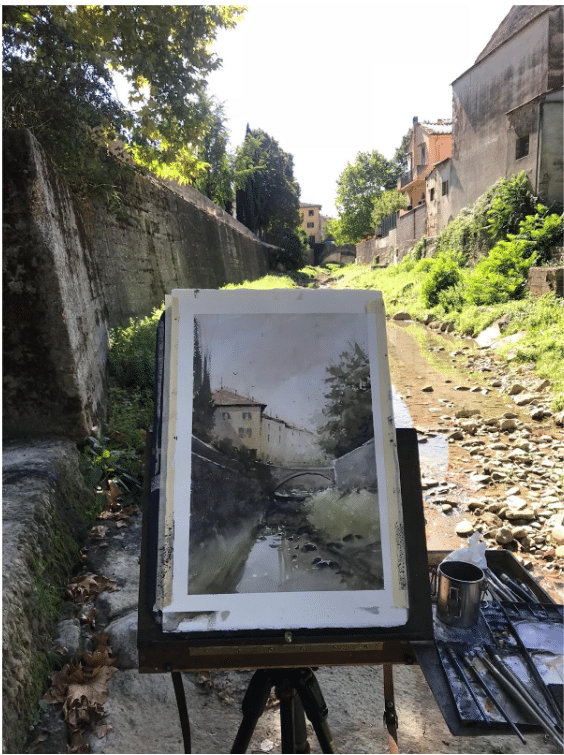
The finished painting in the setting
Most of all, I simplify each major shape by eliminating unnecessary details. There is still enough suggested detail to make it interesting to the viewer.
This is all achieved by intentional design and neither duplication nor just some happy accident of random shapes. Nature gives us the clues and if we look hard enough, all the information is there, we just learn to organize the pieces to create visually pleasing paintings. On your next painting, see what you can do to reorganize a scene and take it a level beyond ordinary!
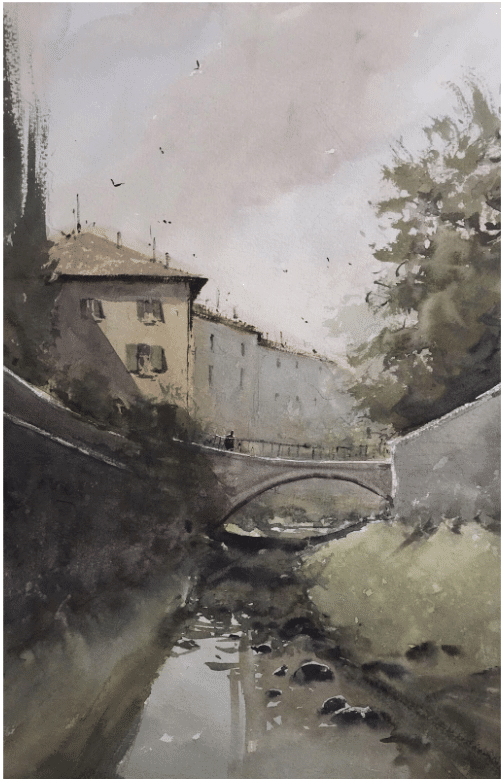
Cityscapes in Watercolor with Dan Marshall from Creative Catalyst Productions on Vimeo.
Watercolor Gets Global Attention
By
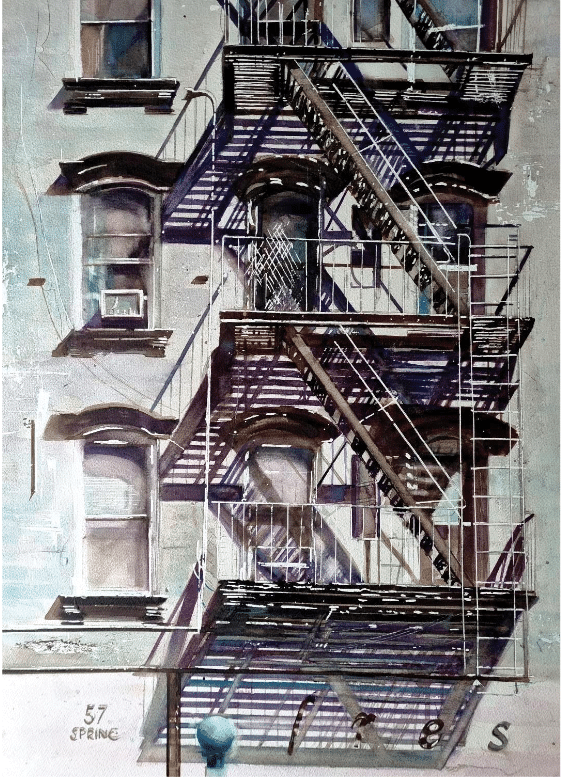
David Poxon (b. 1960), “Escape,” 2023, pure watercolor on paper, 27 x 16 in., available through IWME 2024 or the artist
The English artist and author David Poxon rejoices in the fact that Britain brought watercolors to global attention as a fine art during the 18th century. To celebrate this heritage, he organized the third edition of the International Watercolour Masters Exhibition, opening this week at an idyllic spot in western England, roughly 35 miles northwest of Birmingham.
On view May 15 – May 24 will be 150 works by more than 50 of the world’s best watercolorists, including Julia Barminova, Carol Carter, Veneta Docheva, Pasqualino Fracasso, Laurie Goldstein Warren, Xi Guo, Alex Hillkurtz, Coco Nguyen, Gerhard Ritter, Deepti Singh, Claire Sparkes, and Sarah Stokes. Complementing the display will be a lively program of demonstrations and workshops.

